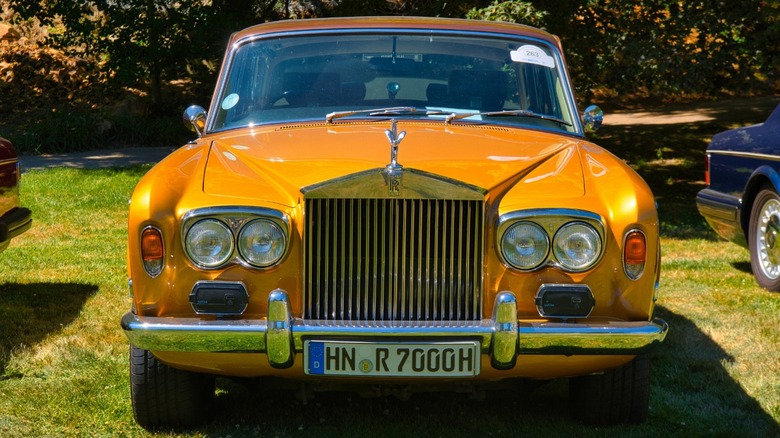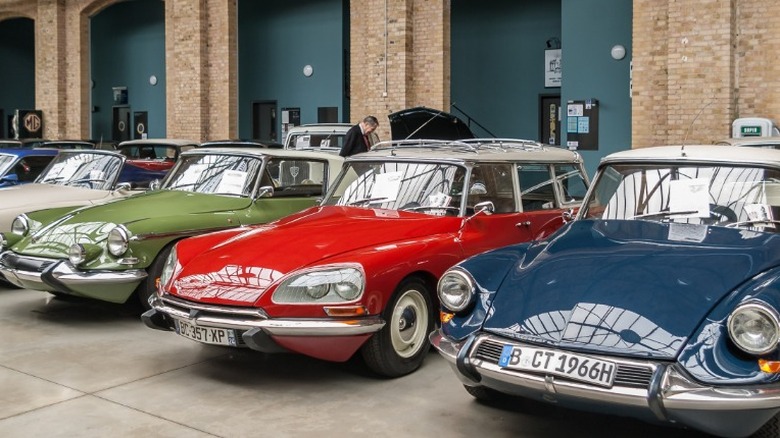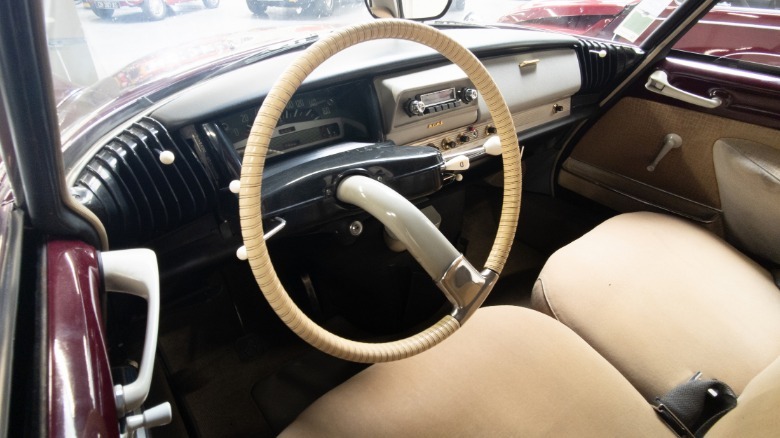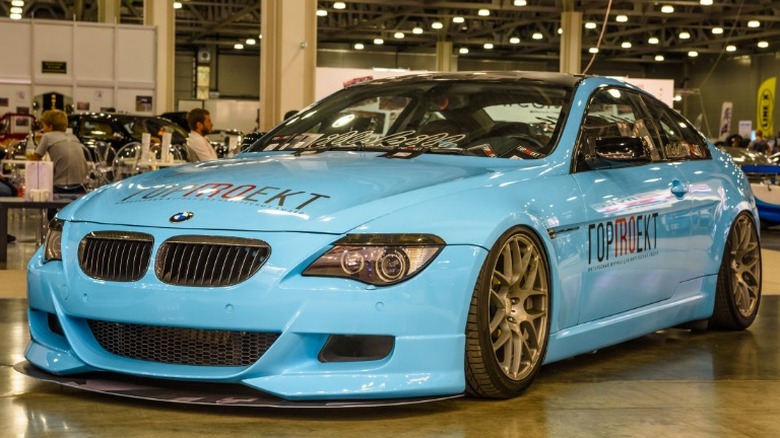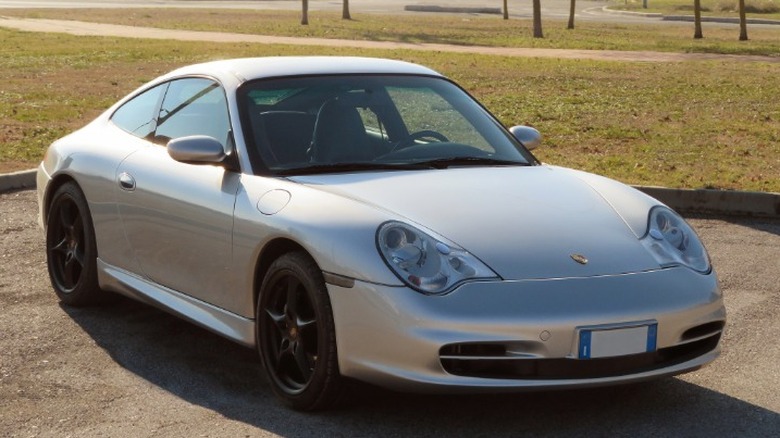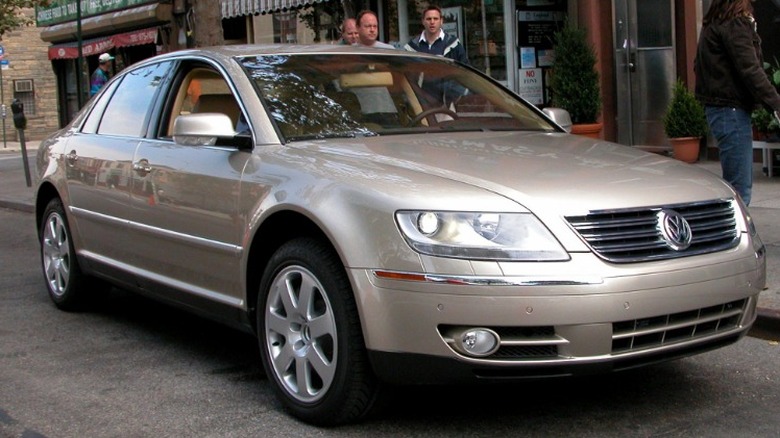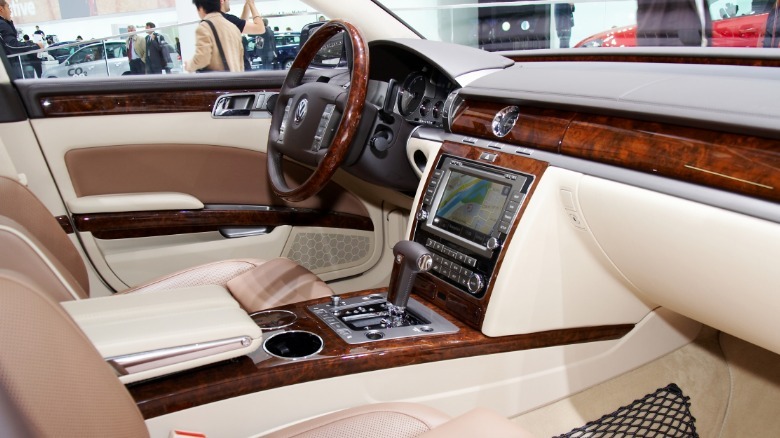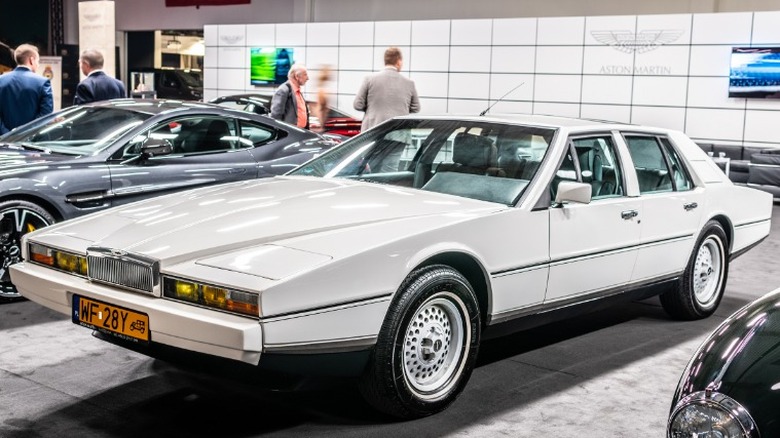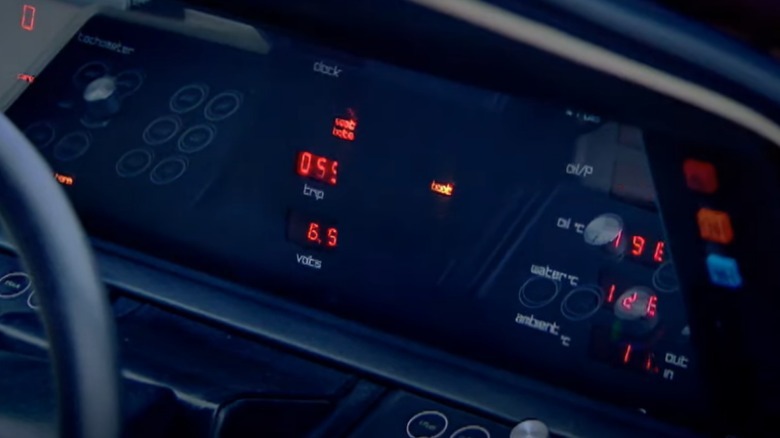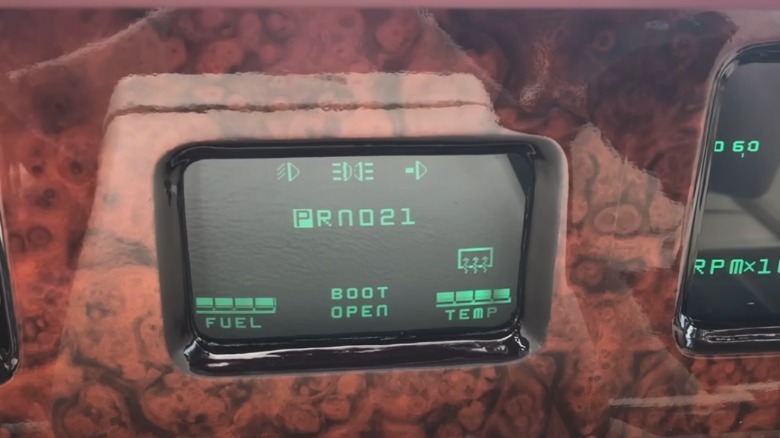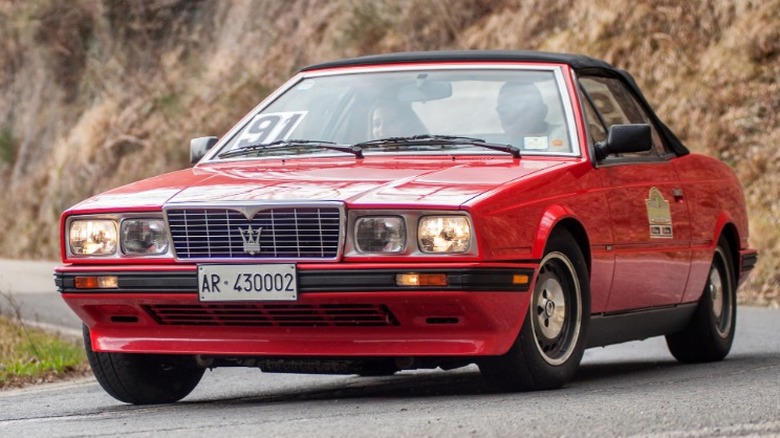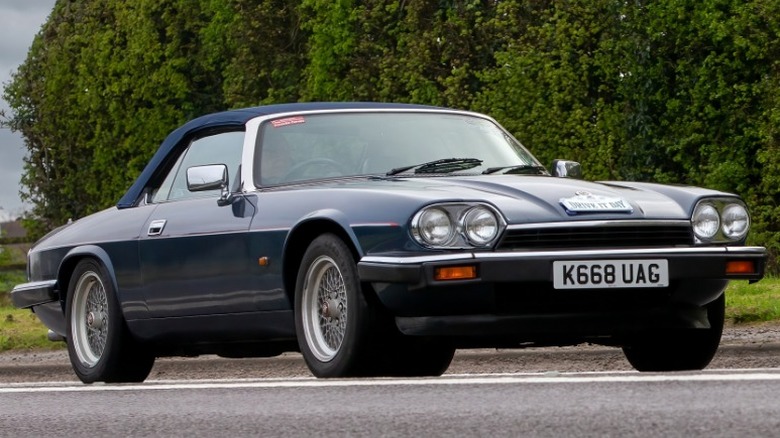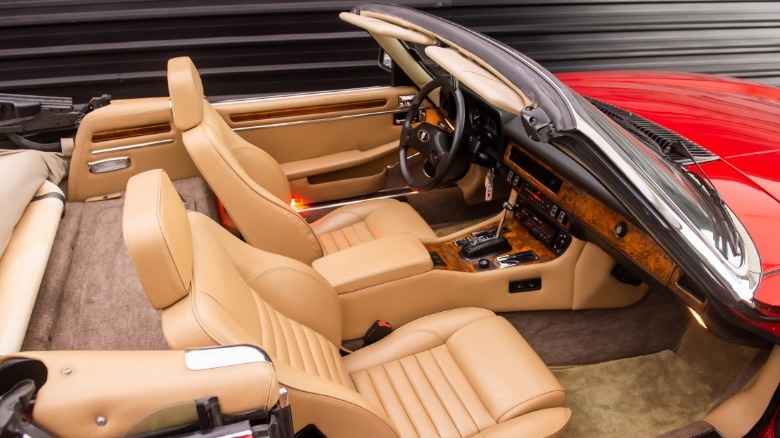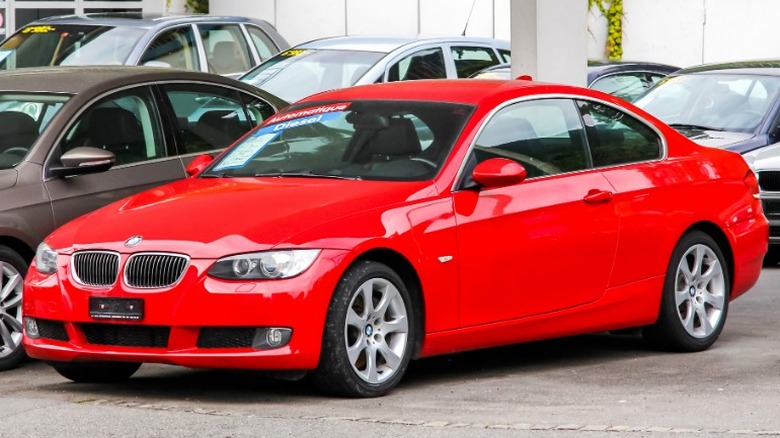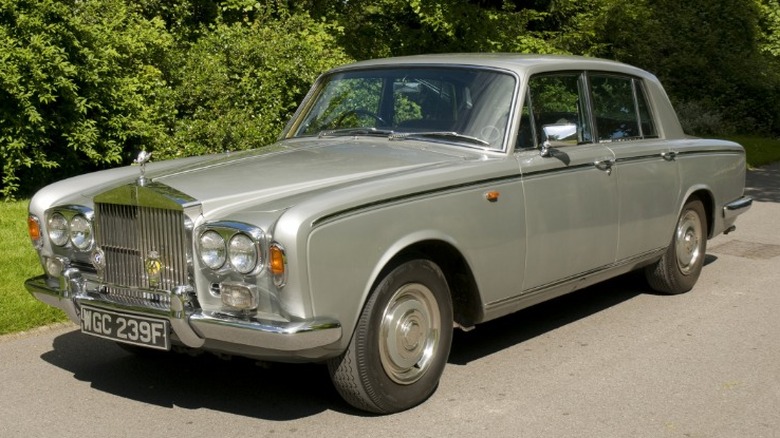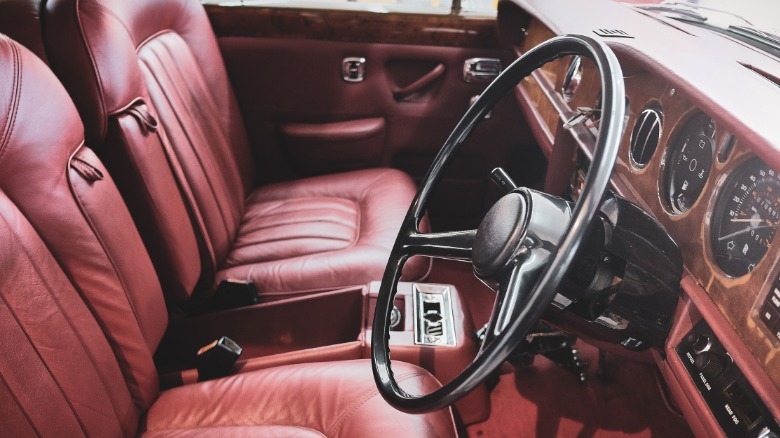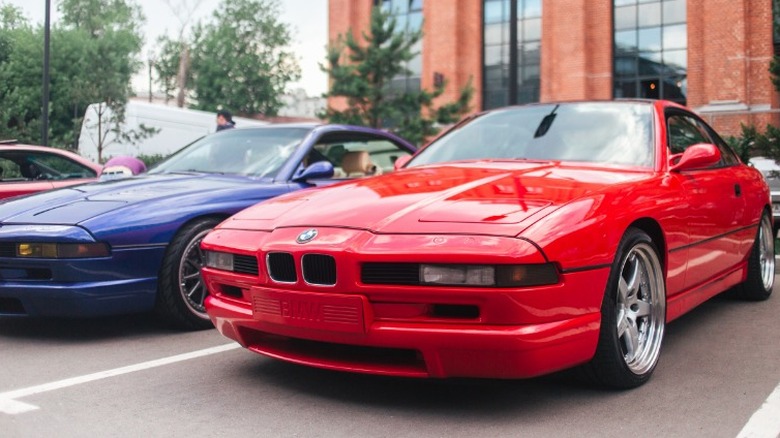10 Classic European Cars That Are A Total Waste Of Money
Owning and driving classic cars is a hobby for which many of us have a strong passion. Even the process of upgrading, repairing, and restoring a classic beauty can be cathartic and an enjoyable pastime, even when it becomes difficult and frustrating. But there are so many cars to choose from coming from so many eras, it can be hard to choose one. Of course, the first barrier to entry may be chosen for you simply by your budget, as rare Ferraris, Duesenbergs, or Superbirds are well beyond the reach of most of us in terms of initial cost. Yet, some of us are drawn to cars outside of the Detroit three and prefer something seen as a bit different from owning an old Dart, Corvair, or Thunderbird. For those folks, there are troves of European classics from all eras.
As an American, owning or restoring a European classic car can be a daunting experience. Parts can be hard to obtain, especially for models never originally sold in the States, and there are many. An older Mercedes-Benz or BMW might not be so difficult to work with, but a Lancia, Seat, or Skoda can feel near impossible. Plus, many of these cars are beautifully crafted, but terribly built, making the prospect of breakdowns imminent. Whether the mounting expense is from scarcity of parts, continuous breakdowns, or never-ending restoration work, these 10 classics are a total waste of money.
Citroën DS
As France rebuilt following WWII, its industries provided cheap and capable automobiles to get the populace on the move and back to work. By 1955, things were going in the right direction, which provided an opportunity for automakers to expand their offerings. This was the time that Citroën chose to introduce its all-new DS, a clever and revolutionary European automobile with a lasting legacy.
Among the novel features of the DS is a hydropneumatic suspension that provided the smoothest ride and made the car's height adjustable. This made it possible to change a flat without using a jack and to drive on just three wheels in an emergency — a DS saved prime minister Charles DeGaulle from an assassination attempt. It had headlights that turned with the steering wheel, although those were not installed on the export version for the U.S. due to strict headlight regulations. The interior of a DS is also supremely comfortable and makes for a very pleasant place to be on the road.
These were never popular cars in the U.S. and export variants are hard to find. Furthermore, mechanics that know the ins and outs of quirky French cars are rare and retiring, and parts are almost non-existent, except for specialty retailers importing them from France. They are highly desirable classics that make great conversation starters, but their rarity can make them very costly to own. Only those who have extraordinary skills maintaining a classic Euro car should own one as they can otherwise become too expensive to be worth it.
BMW M6 E64
This car is stunning and luxurious as well as blisteringly fast. The M6 E64 was the two-door companion to the ever-popular M5 sports sedan. As one of a long line of cars factory modified by BMW as high-performance variants of its passenger cars, the M6 E64 was manufactured from 2005 through 2010 and featured the only V10 ever produced by the Bavarian company. And in true BMW fashion, the 5.0-liter V10 churned out a tire-shredding 500 horsepower at a time before that power figure was more or less commonplace.
To be clear, these cars are sublime. The styling is a somewhat transitional design bridging the gap from the older squared-off look from the '90s to the more angular and aggressive look of modern BMWs. The interiors are supple and the suspension keeps the car planted. But it was the S85 V10 engine that really made the car something special. When developing this engine, engineers at BMW used lessons learned from F1 racing to create this power plant, which has a high 12:1 compression ratio, forged crankshaft, magnesium rods, and aluminum pistons. This all made for a potent package that today can be picked up for between $20,000-$30,000, depending on condition.
As good as these cars are, many owners report having big problems. Rod bearing failure can create the need for a full engine replacement at a cost of $8,500 plus labor. Furthermore, SMG transmission failures are not rare and can tack on several thousand more dollars, which can add up to half of the value of the car you just bought.
Porsche 911 (996)
Porsche has been a maker of incredible sports cars for 75 years and all of them were air-cooled until 1997. This change was a major shift in engine technology from the Stuttgart company, but the products continued to be excellent high-performance sports cars.
In addition to the break with tradition for the cooling of the engine, which was an inevitable change as emissions regulations grew stronger, the 996 also featured the first 911 without round headlights. Its composite headlights are often called the "fried egg" due to their irregular shape. Much of the car was redesigned, and Porsche had meant for the car to be easier to drive than its successor and less likely to lose traction while being pushed through the corners. But many Porsche die-hards hated it.
These cars are now in the 20-year-old range and sitting toward the bottom of their depreciation curve, which means that can be picked up affordably — by Porsche standards of affordability. However, they have an issue with a flawed IMS bearing in the engine that can cause catastrophic engine failure. Repairs can easily exceed $10,000, turning a bargain Porsche into an expensive mistake. Furthermore, While the last air-cooled 993 911s are skyrocketing in value, Jack Baruth of Road and Track speculates that will never happen with the 996. The many changes made to the car along with a few salient points mean it will never be so highly desirable, which means your purchase will likely not appreciate and could end up being a waste of money.
Volkswagen Phaeton W12
If you are in the U.S. and have never heard of the Volkswagen Phaeton, don't fret, there is good reason for that. Sometime before 2004, when the Phaeton was released, VW executives decided the brand really needed something to offer at the top end of the market. Therefore, VW built a fancy new all-glass factory and hired a bunch of guys in white lab coats to assemble the best VW ever built. No expense was spared as they filled it with every luxury imaginable and tossed a bunch of cutting-edge yet complex engineering between the wheels. The result was the smoothest, most comfortable, and most powerful VW you could buy. The problem is that, at least in the U.S., nobody wanted a $100,000+ VW.
The Phaeton might be the most luxurious VW ever built, but it is also the most complex, especially the W12 version. It has thousands of electric motors to power everything from the seats to the hidden air vents. It is over-engineered and the result is that any repair is excessively expensive and uses rare parts that likely have to be ordered from Germany. Hagerty reported about a recent example sold at auction for just $7,445, which is down from its 2004 sticker price of $81,690 ($130,000 adjusted for inflation). Fortunately, it came with service records, and those showed $50,000 in repairs since 2011. So, if you want bargain-priced German luxury, maybe check out the Phaeton but make sure you have double the money you pay for it and set aside half of it for the inevitable repairs.
Aston Martin Lagonda
British carmaker Aston Martin has made many interesting and exciting cars throughout its history. But the most radical, unique, and exquisite of them all is the Lagonda, produced from 1976 to 1990. This car was built to be at the bleeding edge of British luxury and sophistication and included the very best automotive technology that could be dreamed up in the late '70s. The result was an elegant car with a love-it-or-hate-it wedge style that would be kept running only by virtue of its owner's sheer willpower ... and a very skilled mechanic.
The overall packaging of the Lagonda is opulent and plush, and the mechanicals motivating it are proven Aston Martin components. The problems with the car are the electronics built into the first-ever digital dashboard in a car. Early examples used LED displays that were later replaced with multiple CRT screens from F-15 fighter jets. These components are fascinating and were groundbreaking at the time, but are quite fragile.
In an interview with Auto Express, Rodger Dudding, who owns an astonishing collection of 24 Lagondas along with scores of other rare cars, laments the many small electrical issues that prevent it from making regular trips, of which one happened the night he brought it home from the dealer. However, he does say that his cars have become more reliable after having sorted out the issues through extensive repair work. While he does not mention the cost of this work, he is a man of significant means, so it is safe to surmise the cost was substantial. Buying a Lagonda would only be wise if you are also someone with the means to keep up such a rare and exquisite classic.
Maserati Biturbo
This car's Italian styling, plush leather interior, and the promise of a twin-turbo engine may draw you in and promise you motoring bliss, its reputation suggests you'll have motoring regret. Maserati originally developed its Biturbo coupe to offer an upscale car with excellent performance at a more affordable price point. It debuted in 1981 with a price of $25,000, which was about $10,000 more than a Cadillac DeVille, but far less than the $45,000 Ferrari 308.
Maserati made a very nice-looking car and its 185 horsepower output was respectable for its day. The engine is a SOHC 2.5-liter V6 with two small turbos, which were thought to have less lag than a single large turbo. The engine is uncommon for 1984 — a three-valve design, with engineering that seems very cutting-edge for its era. However, despite the advanced engineering, the engine was fed by a Weber carburetor, even though fuel injection had been available for years.
Biturbos quickly gained a reputation for being unreliable. Early on cars suffered from corrosion due to a lack of galvanized steel or protective coating, and the interior quality was lacking, with dashboard cracking after only a few years. Most complaints with the car stem from electrical issues and problems in keeping a twin-turbo car running with a properly adjusted carburetor, all without the aid of any computer. Reliability increased with later models after bumping the engine size to 2.8 liters and adding fuel injection. However, with its limited production and early adoption of engine technology, a Biturbo today could cost you dearly if you want to regularly drive it.
Jaguar XJS
British automaker Jaguar was known for years for its rock-solid and powerful inline-six engines that powered iconic classics such as the XK120 and E-Type. Jaguar needed a replacement for the E-Type and chose to take the new car upmarket. This resulted in the XJS, a long and luxurious grand tourer featuring Jaguar's timeless styling and 5.3 liters of complex V12 mechanicals.
Jaguar unveiled its new V12 car in 1975, showing off a car that would offer sporty driving in a luxurious and comfortable package. Throughout the interior, you can find yards of fine leather complemented by real wood accents and power windows and locks. The V12 engine uses both Bosch and Lucas components for its fuel injection system, which helps it to produce 285 horsepower to get the car to a top speed of 150 mph, which is respectable for 1975.
Jaguar produced these cars for 20 years until 1995, and there are many still on the road and in garages ready to buy. However, while the V12 engine is robust and likely won't suffer from a major failure, the electronics will. Under the hood of a Jaguar V12 is nightmare fuel for most mechanics, with myriad wires, connectors, and vacuum lines that all have to be working harmoniously for everything to go right. They also suffered from corrosion, leaks, overheating, and the occasional fire. The XJS may suffer from many little problems that make it overall untenable to own and maintain for very long. That can get very expensive.
BMW 3 Series E92
As far as classic cars go, the E92 BMW just barely fits, but it has been out of production for more than 10 years, it is European, and it is surely seen as a classic by most. The E90 series of BMW covers the 3-series cars, including sedan, wagon, coupe, and the high-performance M3. The coupe designation is E92 and could be called a luxury sports car, so we will discuss it here.
The E92 3-series cars were available with a range of engines including a 3.0-liter inline-six with or without a turbo, and a 3.0-liter diesel in the U.S., and BMW offered other engines elsewhere. The 3-series won many automotive awards and remains a highly desirable model for its combination of attractive styling, highly refined interiors, and, most of all, the excellent and engaging driving experience.
Despite being a car you want to drive as well as be seen in, the E92 has some potentially costly shortcomings. Engine troubles pop up on many cars resulting in expensive repairs including the high-pressure fuel pump and turbochargers. Electrical issues can cause headaches with failed blower motors and a failure of the electronic steering lock. Furthermore, it was affected by the major Takata airbag recall. Consumer Reports gives these cars a 1/5 for reliability. While most people who buy a German luxury car do so with the understanding that repairs can get expensive. But when repairs stack up and the failures are so large, the excellent and sporty luxury car just turns into a perpetual waste of money.
Rolls-Royce Silver Shadow
Silver Shadow models span the years from 1965 to 1980, and all of them are sedans with a V8 engine and rear-wheel-drive. These were built in the day before luxury cars came full of accessories and dozens of power accessories, which means the luxury in these cars comes in the form of a soft ride surrounded by premium materials including an abundance of real wood and fine leather. This model Roller is powered by a recently increased displacement 6.75-liter V8 engine with a power rating described by the manufacturer as "adequate." Behind the big V8 is a GM automatic transmission and the car rides on a hydropneumatic suspension, which provides superb ride comfort.
These cars were hand-built in limited numbers, but there are still many to choose from on the used market. Prices vary based on condition and even the most pristine examples are still relatively affordable. However, there is an adage that says nothing is more expensive than a cheap luxury car, and that holds true for an old Roller. Parts for 40- to 50-year-old cars are sparse and must be ordered through specialty retailers and small production numbers drive up the price. Furthermore, most repair shops won't want to touch on old Rolls-Royce and likely won't have any expertise. The mineral oil in the suspension is expensive and the system presents countless opportunities for a leak to develop. Brake service can exceed $1,000 and just replacing the hood ornament can cost you more than that. Owning such an opulent car from a prestigious brand may be tempting, but spending a fortune to drive it is much less so and probably should be avoided at all costs.
BMW 850i E31
BMW has always been a company of innovation and growth. Throughout the '80s, its cars moved steadily upmarket while focusing on sporty driving characteristics. This culminated in 1989 with the ultra-luxury V12-powered 850i E31.
To create this car, BMW engineers essentially grabbed two of their excellent straight-six engines and managed to pair them together to make a single 5.0-liter, 12-cylinder gas hog. The engine was wrapped in a luxury coupe body that is extra long to make room for the engine and finished off with pop-up headlights, the definitive symbol of awesome cars from the era. In 1993, the displacement was raised to 5.6 liters, and a six-speed transmission was installed behind it. The result of all this was a slick European luxury grand tourer with plenty of power to fly down the highway.
Sometimes today these can be found at bargain prices. Concours quality cars are through the roof, but less well-manicured cars exist. However, the reason deals can be found is likely because maintenance and repairs are exorbitantly expensive, and the maintenance schedule is demanding and precise. Skipping a service can ruin a transmission down the line. The only rational people who should buy one that is not already perfect — and therefore extremely expensive — are skilled BMW mechanics or others who have significant money to waste on old BMWs.
